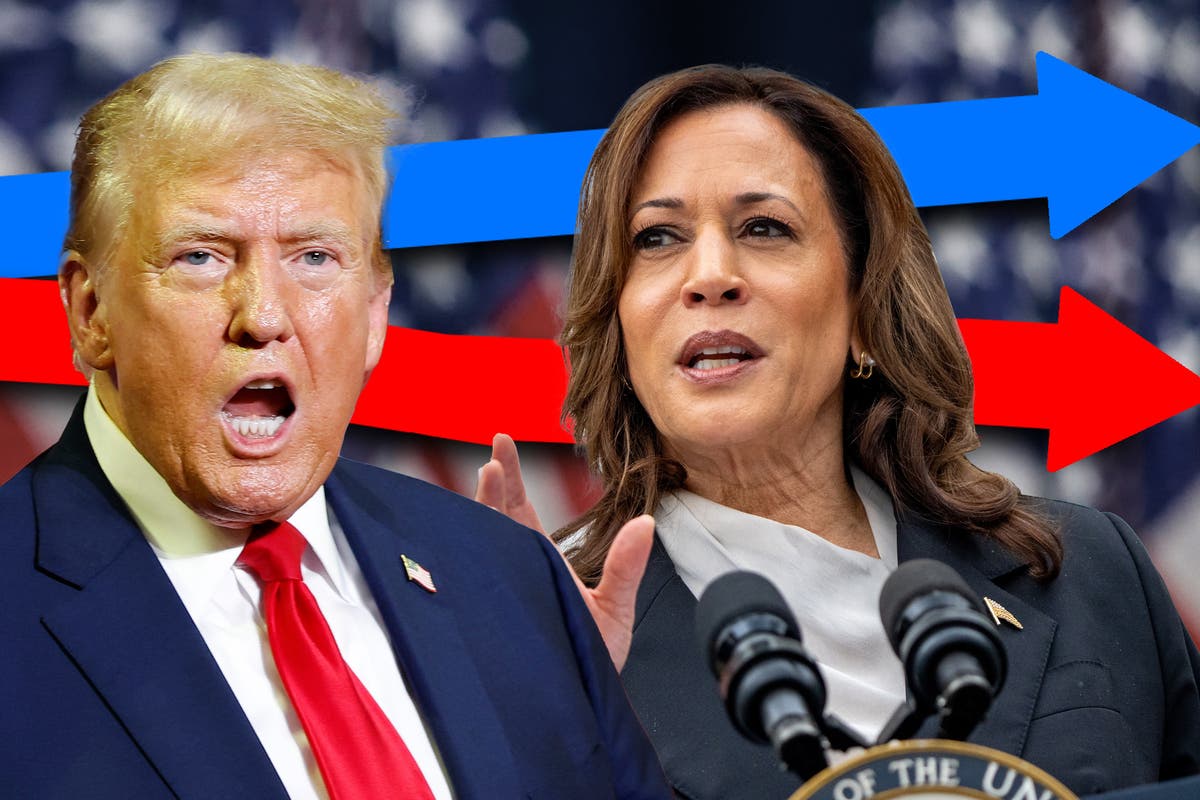Vice President Kamala Harris is making a bid for the White House with running mate Tim Walz after replacing President Joe Biden on the Democratic ticket just a few months before Election Day.
So how will Harris actually fare against Donald Trump and his vice-presidential pick, JD Vance, this November?
While the latest polls do not fully take into account how voters may respond to Walz as the Democratic VP pick, Harris now has a 2.4-point lead over Trump in the latest average of national polls, collated by FiveThirtyEight.
On average, Harris has been marginally ahead of Trump in national polls, though the race remains tight and there has been notable variation between surveys.
For live updates on the US presidential election, click here.
In the seven battleground states—Arizona, Georgia, Michigan, North Carolina, Nevada, Pennsylvania, and Wisconsin — the polls are more volatile, and voters don’t seem to have made up their minds just yet.
Much of the latest New York Times/Siena College poll was conducted as Walz joined Harris on the campaign trail, and shows the vice president with a four-point lead in Michigan, Pennsylvania, and Wisconsin, a substantial shift from Biden’s trajectory in the swing states.
Yet another YouGov/CBS poll from one week earlier (up to August 2) suggested that neither Trump nor Harris had a significant lead in any of the battleground states, with the two candidates in an overall deadlock.
In both Georgia and North Carolina, Trump has a three-point lead over Harris in the YouGov polls. Republican candidates have won in both states in every election since 2000, save for one.
Demographics
Trump’s key supporters remain male voters, the 45-64 age group, and white voters with no college education. But in the last group, Trump appears to have lost some of his leverage over Harris when compared to Biden.
Harris polls best with young voters, female voters, and Black voters, among whom Harris has a +68 point lead.
Though Harris appears to be making significant headway in both national and battleground polls, one challenge that her campaign continues to face is a possible “personality gap.”
A previous NYT/Siena poll showed that while Harris polled stronger than Trump on several characteristics — intelligence, presidential temperament, and caring about “people like you” — respondents were still far more likely to view Trump as a stronger leader.
And as Harris-Walz campaigned in Michigan, a Redfield and Wilton/Telegraph poll told a confusing story. It showed battleground voters align more with Democratic policy positions on issues like the economy and policing, but nonetheless “trust Trump more” than Harris on the same issues.
As Harris has more time to cement her position as the Democratic presidential candidate, the gap between party alignment and candidate favor may narrow, since Trump has had some eight years to broadcast his policy positions to voters.
Vice presidential polling
Given the unprecidented turmoil in the presidential race this summer, it’s safe to say that plenty could change in between the current polls and the November ballots.
While it’s too soon for the polls to reveal how voters feel about Walz as a vice-presidential pick, the choice of JD Vance as Trump’s running mate has proven divisive.
A poll in late July revealed that Vance has the worst approval rating of any vice presidential nominee in history. While Democrats are staunchly against the choice, Republicans are split on whether the Hillbilly Elegy author was a good pick for Trump’s running mate, with a third of non-MAGA Republicans saying they were not yet sure.
Meanwhile, previous polling shows that Walz has a good track record when it comes to approval ratings, and the benefit of a lengthy political career. However, he is not yet well-known to much of the national electorate, when compared to other VP hopefuls.

